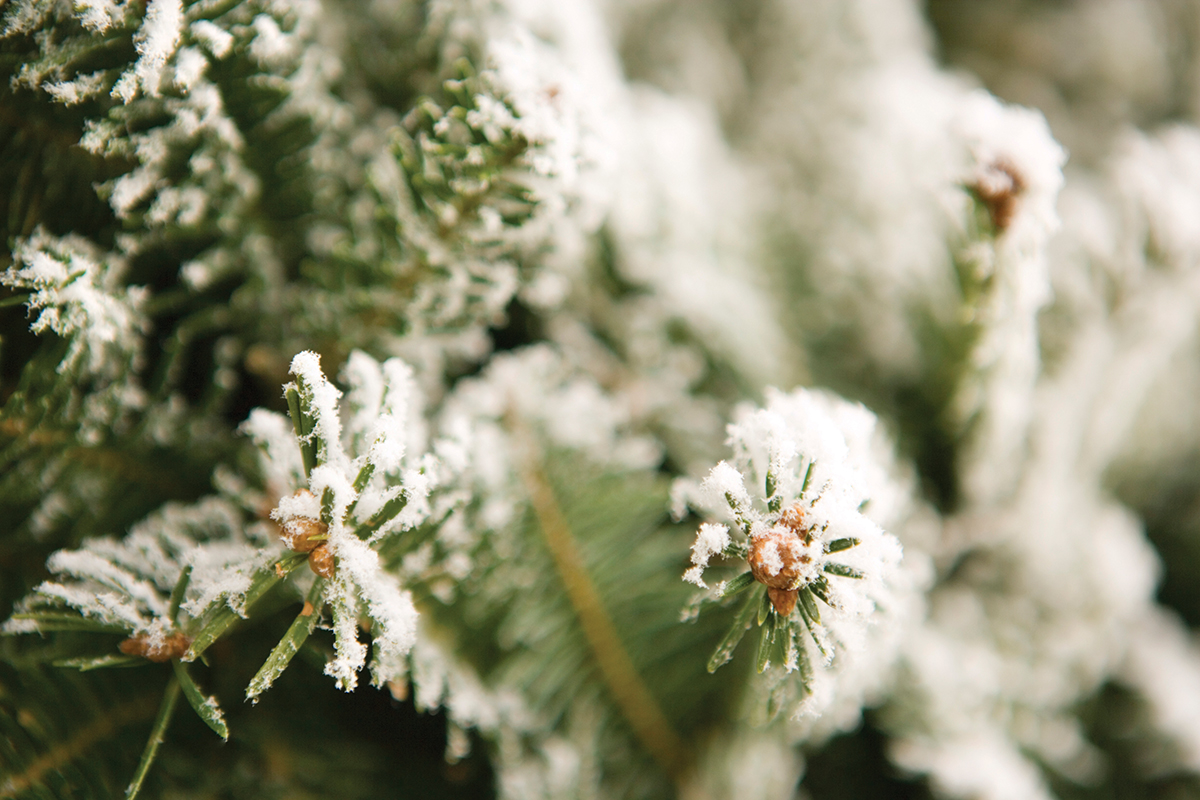Our Blog
December Spiritual Report

O Christmas Tree!
O Christmas Tree O, Christmas Tree,
Your branches green delight us.
O Christmas Tree, O Christmas Tree,
Your branches green delight us.
They’re green when summer days are bright;
They’re green when winter snow is white.
O, Christmas Tree, O, Christmas Tree,
Your branches green delight us!
Dear Friends,
I have to make a confession. Growing up we never had a real LIVE Christmas tree. In Northeastern Pennsylvania initially our family had a silver tree (quite fashionable in the 70’s). Afterwards the artificial tree was green. Even living in the “old country” we had an artificial Christmas tree.
Once I was an adult with my own family, I was outnumbered on the decision to have a live Christmas tree instead of an artificial tree. My first thought was: “Why do we have to endure the mess of dried pine needles, the risk of a fire hazard and impossibly tangled strings of lights?” But taking the girls down to Trax Farms, going out into the fields and finding that perfect Christmas tree was a wonderful experience. Seeing their smiles and them dancing around the tree is a memory that I will cherish as a parent.
But why do we have a Christmas tree in our homes, in our churches and public places. Where does this tradition come from?
According to scholars this beloved symbol of the holiday season has a rich and diverse history that stretches back centuries. Its origins can be traced to ancient pagan traditions, that included the celebration of the winter solstice in Northern Europe that can be traced back to pre-Christian times. From that era, we even have the tradition of decorating evergreen trees, symbolizing the resilience of life during the harsh winter.
With Christian missionaries spreading the Gospel in Europe we see how many pagan traditions were gradually absorbed and transformed to align with Christian beliefs. A prime example of this trend is the Christmas tree that took on a new symbolism and a connection to a saint who lived almost 1400 years ago. His name is St. Boniface, a missionary bishop known as the Apostle of Germany. It was St. Boniface who came across a tribe (in today’s modern Germany) that worshiped the Norse god Thor and as part of their winter ritual they would sacrifice a child under an oak tree, known as the Thunder Oak, which was dedicated to Thor, god of Thunder.
Appalled by this, St. Boniface intervened, declaring that the oak tree was not sacred and that the true God could demonstrate his power by preventing the sacrifice. According to one tradition, a strong wind suddenly arose, tumbling the mighty oak, sparing the child, and convincing the pagans of the Christian God’s supremacy. Many of the local tribesmen and their leader witnessing all this and hearing St. Boniface preach the Gospel, converted immediately.
But what happened next started one of our most cherished and widespread Christmas traditions. Past the now-fallen oak tree stood a small fir tree. St. Boniface pointed to the tree and said this: “This little tree, a young child of the forest, shall be your holy tree tonight. It is the wood of peace. It is the sign of an endless life, for its leaves are ever green. See how it points upward to heaven. Let this be called the tree of the Christ-child; gather about it, not in the wild wood, but in your own homes; there it will shelter no deeds of blood, but loving gifts and rites of kindness.” (Matthew Sewell; Thor, Saint Boniface, and the Origin of the Christmas Tree)
What’s interesting is that just like St. Patrick used the three leaved shamrock to explain the concept of the Holy Trinity to the pagan Irish, so also did St. Boniface use in his preaching the triangular shape of the fir tree to explain the theology of the Holy Trinity: Father and Son and Holy Spirit to the German people. He also explained that the shape of the fir tree is meant to point our minds towards God. Centuries later the Christmas tree tradition arrived in the United States thanks to German immigrants.
Friends, the Christmas tree has become a beloved tradition for many of us. All over the world it continues as an enduring symbol of the holiday season, bringing joy and warmth to our homes, but also to our churches and public places. The Christmas tree brings us together to celebrate the Nativity-Birth of Our Savior Jesus Christ.
This year as you decorate your Christmas tree, a tradition that goes back to the 16th century, remember to also decorate your soul with prayer, fasting, works of mercy and being part of the many GCU volunteer opportunities to help “our neighbors.” It is my hope that your Christmas tree will be a focal point of your festive celebrations, connecting family and friends, generations and cultures in the spirit of joy for “God is with US!”
As the spiritual advisor and member of the Board of Directors of the GCU, I want to thank you all for your prayers and support. May our Lord Jesus Christ, born in Bethlehem, bless you, your families and loved ones at this blessed time of hope and grace.
Christ is born! Glorify Him!
Christos Raždajetsja! Slavite Jeho!
Sincerely yours in the new-born Christ,
Fr. Valerian M. Michlik | GCU Spiritual Advisor